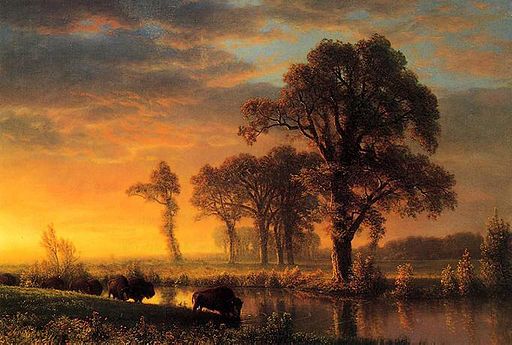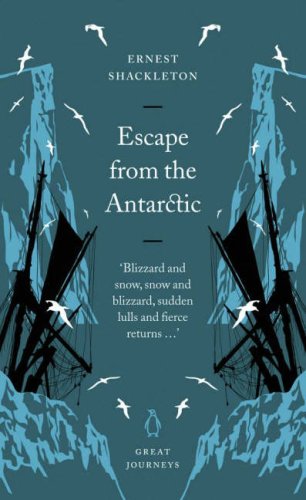The Prairie
Chronologically last in James Fenimore Cooper's Leatherstocking series, The Prairie follows the wagon train of Ishmael Bush and his family, who are journeying into the recently acquired Louisiana Purchase. The Bushes make their own laws and shun society, even that of an old, solitary Trapper who stumbles across their campsite. He does not fail to notice that one of their wagons is closely guarded, carrying something or someone that never sees the light of day. A chance meeting with a Captain Middleton and a party of hostile Sioux sends events and characters into a crazy chase across the prairies, where friendships and hatreds arise from unpredictable sides.
I had high hopes for this book, assigned reading in my Early American Arts, Music, & Lit class. Even now, I would still like to read The Last of the Mohicans, which features the protagonist - the Trapper - in his younger years. Overall, The Prairie was like Seven Gables in that the concept was great and the execution was disappointing.
More specifically, this book was painfully slow. Mark Twain wrote a piece called "Fenimore Cooper's Literary Offenses," and after reading an excerpt where he dissects paragraphs from The Prairie, I'm inclined to agree with him. It's a 500+ page tome with only enough action for a book half that size. It was published in 1827, and Cooper's style is very much conventional - no philosophical digressions as in later American works, like Moby-Dick. Descriptions of characters and situations take up most of the time, while descriptions of the landscape (which are excellent) are given a handful of paragraphs. The Trapper talks a lot, even in the middle of an action scene, though the actions scenes were still by far the highlight in The Prairie.
According to my professor, portrayal of Native Americans in this book was typical for the times (i.e. riddled with inaccuracies), but to Cooper's credit, it seemed to me that he tried to write villains and heroes from both groups of people (one of the worst villains is a member of the Bush wagon train). My favorite part overall was the duel between the Sioux chief and the Pawnee warrior, one of the very best duelling scenes I've read. The Trapper, too, is arguably closer to the Native Americans than the European Americans, which is pretty significant.
2.5 out of 5 stars for The Prairie. Recommended if you are looking to finish the Leatherstocking series, but I imagine there are better volumes to start with.
I had high hopes for this book, assigned reading in my Early American Arts, Music, & Lit class. Even now, I would still like to read The Last of the Mohicans, which features the protagonist - the Trapper - in his younger years. Overall, The Prairie was like Seven Gables in that the concept was great and the execution was disappointing.
More specifically, this book was painfully slow. Mark Twain wrote a piece called "Fenimore Cooper's Literary Offenses," and after reading an excerpt where he dissects paragraphs from The Prairie, I'm inclined to agree with him. It's a 500+ page tome with only enough action for a book half that size. It was published in 1827, and Cooper's style is very much conventional - no philosophical digressions as in later American works, like Moby-Dick. Descriptions of characters and situations take up most of the time, while descriptions of the landscape (which are excellent) are given a handful of paragraphs. The Trapper talks a lot, even in the middle of an action scene, though the actions scenes were still by far the highlight in The Prairie.
According to my professor, portrayal of Native Americans in this book was typical for the times (i.e. riddled with inaccuracies), but to Cooper's credit, it seemed to me that he tried to write villains and heroes from both groups of people (one of the worst villains is a member of the Bush wagon train). My favorite part overall was the duel between the Sioux chief and the Pawnee warrior, one of the very best duelling scenes I've read. The Trapper, too, is arguably closer to the Native Americans than the European Americans, which is pretty significant.
2.5 out of 5 stars for The Prairie. Recommended if you are looking to finish the Leatherstocking series, but I imagine there are better volumes to start with.




Comments